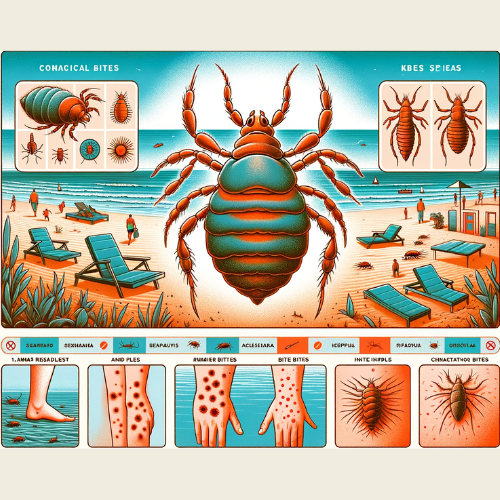
03 Jan Sand Fleas: More Than Just Beach Pests
Beyond the Beach Myths
Sand fleas, often mistaken for insects, are actually small crustaceans found in sandy beaches and coastal areas. This detailed blog post aims to clarify misconceptions about sand fleas, focusing on their characteristics, habitat, and whether or not they bite, while emphasizing the importance of understanding these tiny coastal dwellers for beachgoers and residents alike.
Contrary to popular belief, sand fleas are not insects but tiny crustaceans, scientifically known as Talitridae. They are typically found in moist sand at beaches and in marshes. Sand fleas play a crucial role in the coastal ecosystem, feeding on organic debris and thus contributing to the environmental balance. However, their presence can sometimes lead to discomfort for humans.
Thriving in coastal environments, especially on sandy beaches where they burrow to lay eggs. They prefer moist, organic-rich sand, which provides both nourishment and an ideal breeding ground. These tiny creatures are most active during the evening and at night, which is when they are most likely to come in contact with humans.
Their Itchy Bites
One of the most common questions regarding sand fleas is whether they bite. While the majority of these species do not bite humans, some species are capable of biting. These bites are generally not harmful but can cause itching and discomfort. It’s important to distinguish sand fleas from other biting beach pests like certain types of flies and mosquitoes.
In cases where they do bite, the bites typically appear as small red bumps on the skin, often accompanied by itching. These bites are usually harmless and resolve on their own. However, excessive scratching can lead to secondary infections, which might require medical attention.
Preventing sand flea bites involves a few simple measures. Avoiding the beach during their peak activity times, using insect repellent, and wearing protective clothing can significantly reduce the likelihood of getting bitten. Additionally, showering after visiting the beach and shaking out clothing and beach gear can help remove any sand fleas that may have clung on.
Big Impact on Coastal Ecosystems
Despite their nuisance to humans, sand fleas play an essential role in the coastal ecosystem. They aid in decomposing organic matter and are a food source for various birds and fish. Understanding their ecological importance helps in developing a balanced perspective towards these creatures.
Sand fleas, while often misunderstood, are an integral part of coastal environments. Their presence, although sometimes bothersome, is generally harmless to humans. Knowing how to identify and prevent sand flea bites can enhance one’s beach experience, making it more enjoyable and less itchy. As we continue to explore and enjoy our beautiful beaches, it’s important to stay informed and respectful of all the creatures that call these habitats home, including the tiny but significant sand flea.


No Comments